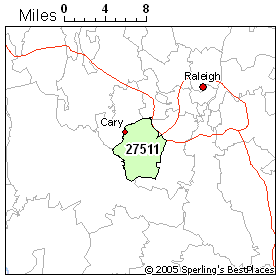Film Semi Size Keciler

BioskopSemi - Nonton Film Semi Online Nonton Film Semi Online, Streaming Film Dewasa, 18+, Gratis. Download Nonton Film download filem semi korea size kecil/download filem semi korea size kecil Review Sinopsis Subtitle Indonesia download filem semi korea size kecil/download filem semi korea size kecil, Movie Terbaru 2018 Gratis download filem semi korea size kecil/download filem semi korea size kecil Streaming Online LK21.
In the age where darkrooms are scarce yet film photography is seeing a resurgence in popularity, a scanner can be your best option for converting film originals to usable digital files for printing, sharing, and archiving. Whether you are an active film photographer or just have an archive of negatives and slides from the past, a film scanner is an incredible, dedicated tool that will breathe new life into your filmic originals. Ranging from the most basic models for simply producing a web-shareable image to the top-of-the-line versions for creating large-scale, print-worthy files, all film scanners, in their most basic sense, perform the same function—using a light source to illuminate your film and an image sensor to record the details.
Where scanners begin to vary from one another is the precision and sophistication of this process, along with the technologies used for recording. More than offering just an increase in resolution, higher-end scanners will also provide you with a longer dynamic range, higher Dmax, more accurate color balance, greater sharpness and, to put it simply—better, more realistic results. The ultimate goal of a scanner is to acquire as much information from the original as possible to give you latitude for further editing, retouching, and printing. How Will You be Using Your Scanner? Scanners should also be chosen based on how you plan to use them. From entry-level options that only support basic scanning of 35mm film strips to high-end variants that scan numerous mounted slides in batches, the most expensive or the least expensive model is not always the right one for you. Consider the film format you plan on scanning most frequently, as well as the volume you intend to process, and the ultimate image quality you wish to achieve.
This book also includes a number of case studies (though now most are dated) to help illustra A useful introduction to, and a practical academic text on, the process of assessing how to structure an organisation. Considers structure through the components of complexity (the degree of specialisation and spans of control), formalisation (the degree of standarisation through selection, roles, policies and training) and centralisation. This then leads to an overview of organisational design options. This then leads to an overview of organisational design options. Buku teori organisasi stephen p robbins pdf free. Considers structure through the components of complexity (the degree of specialisation and spans of control), formalisation (the degree of standarisation through selection, roles, policies and training) and centralisation.
• For example: for medium format, make sure your scanner can accommodate 120 film. • If you're looking to archive your closet full of thousands of 35mm slides, look for a model that allows batch scanning of multiple originals with one command, to save time and effort. • What do you plan on doing with your scans? Are you looking to just create digital versions of your old photos to share on social media, or are you an active large format photographer without a darkroom looking to produce large-scale, fine art prints? In addition to the scanners themselves, the software used to control the scanner is an important consideration. Many scanners come with a robust application that is capable of reaping all of the benefits afforded by the hardware, while other scanners support optional to improve the overall performance. In the case of some entry-level models, as well as the top-quality scanners, proprietary drivers may compel you to rely on additional editing software to fine-tune your results.
Other Factors to Consider Dust-reduction technologies will cut down on additional cleaning time of your photos after scanning.  This should not prevent you from cleaning your negatives with a,, or prior to scanning, regardless of how effective a dust-reduction feature claims to be. Scanning resolution: Note how scanner manufacturers report theirs. The two most common variants are hardware resolution and optical resolution.
This should not prevent you from cleaning your negatives with a,, or prior to scanning, regardless of how effective a dust-reduction feature claims to be. Scanning resolution: Note how scanner manufacturers report theirs. The two most common variants are hardware resolution and optical resolution.
While there is no standard on what either of these terms means, precisely, it is a safe assumption that hardware resolution involves some kind of interpolation to achieve the increased resolution the scanner is purported to provide, while optical resolution tends to stand for an un-interpolated product and a truer measurement of the scanning sensor's capabilities. Color depth (or bit depth) are other numbers to consider when making comparisons. The higher the number is for these values, the better. Simply stated, color depth is measured in bits, and is usually presented as the summation of the three color channels of an image—red, green, and blue—so 16 bits per channel would read as 48-bit. The greater the number of bits per channel, the wider gamut of colors possible for creating more nuanced images with smoother gradations.